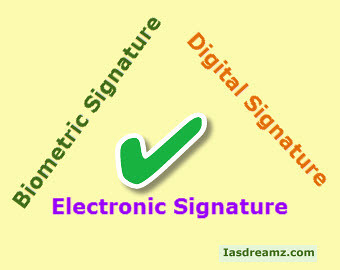Electronic Signature:
It authenticates that anything written electronically is written by the person whose name appear at the end of the document. It need not be similar to the physical signature.
The best example for a e-signature is the email exchange that is communicated between individuals. It gives an implication that the emails or documents exchanges between the two parties agree to its authentication.
Digital signature:
It is form of electronic signature.
It is based on public key crypography – key pair generated by a mathematical algorithm, the public and private keys.
Private keys – held by the owner to digitally sign a document
Public Key – known to everyone for verifying the signature
It relies on the extra security provided by offered by public key infrastructure. It is a long numeric code that is uniquely assigned to one person.
It does not resemble the physical signature.

A digital signature is usually stored in your local system or in the form of a card.
When an individual wishes to encrypt an electronic document, digital signature requires a password or a pin to turn it ON.
It ascertains that the originator of the message is the one who as authenticated it.
Disadvantage:
The authentication is at stake if the password or PIN is leaked.
Digital Certificate:
It also relies on public key infrastructure. However, it must be issued by the certifying authority. You can use the digital certificates for a number of times.
Biometric Signature:
A signature that has been recorded or captured using a variety of input devices.
The devices can be digitizing tablets, computer displays, contact-sensitive technologies, etc.
It is provided generally to protect access to buildings, networks, computers, databases and documents.
It can incorporate the use of physical signatures for authentication. The geometric and dynamic characteristics of the signing process is recorded and incorporated.
